Current weather in mourning gecko habitat — Honolulu, Hawaii, USA:
Lighting
Mourning geckos are perceived as nocturnal, but the truth is that they are cathemeral, which means they are irregularly active throughout the day and night. Because of this mistaken assumption, people also assume that UVB lighting is not beneficial. However, mourning geckos can and will bask under UVB lighting if it is provided, and I have noticed that providing UVB makes a significant difference in healthy growth for hatchlings in particular.
Wild mourning geckos are commonly observed basking and being otherwise active during the day, especially in the morning. In fact, I have found that my own colony becomes very active at “dawn,” or when the lights first turn on in the morning, and sometimes I wake up to their chirping.
Furthermore, UVB bulbs also produce UVA light, which is a spectrum of light that reptiles can see but humans can’t. They see it like an additional color. In other words, depriving reptiles of UVA light is like giving them the equivalent of the red/green color blindness that is sometimes present in humans.
How to set up UVB for mourning geckos
Mourning geckos are Ferguson Zone 1-2 reptiles, and should receive a UVI of 1.0-3.0 in the basking area. This should be the area of highest temperature and UV in the enclosure.
The strength of UVB that a reptile is exposed to decreases in proportion to increased distance from the bulb. Given that mourning geckos have a habit of hanging out upside-down on the top mesh of their enclosure and are not afraid to do so directly under a light, it’s extremely important to choose a UVB bulb and fixture that are safe to use at such a short distance.
These are my picks for the best UVB equipment to use with mourning geckos:
- Arcadia ShadeDweller Arboreal 2.4% UVB Kit (2-4″ / 5-10cm)
- Zoo Med T8 Reptisun 5.0 + Zoo Med T8 Terrarium Hood (4-7″ / 10-18cm)
- Zoo Med Reptisun 5.0 Mini CFL, 13w + Zoo Med Naturalistic Terrarium Hood (5-6″ / 12-15cm)
To increase the distance between the UVB lamp and the top of the enclosure, prop it up with some narrow wood blocks or similar until you reach your target basking distance.
The above distance recommendations assume a ~30% mesh block. It is strongly recommended to use a Solarmeter 6.5 to double-check your UVI directly under the lamp and make adjustments as needed. For more details on adjusting basking distance based on mesh obstruction, see the Facebook group Reptile Lighting > Guides > Guide 1: Using T5-HO lamps above a Mesh Screen.
The UVB bulb should span most of the enclosure’s length to create a vertical light gradient and ample basking sites to reduce competition.

Photo contributed by Woodland Manor Darts and Dragons @WMD_n_D
Heating
- Basking area (top of enclosure) — 80-85°F (26-29°C)
- Cool area (bottom of enclosure) —70-75°F (21-24°C)
- Nighttime temperature — 65-72°F (18-22°C)
Note that it is very important to provide this range of temperatures! Consistent temperatures above 85°F (29°C) can cause stress and heat stroke, and consistent temperatures at or below 72°F (22°C) can cause lethargy, poor appetite, and illness.
People may tell you that it’s perfectly fine to keep mourning geckos at room temperature without a heat source, but it’s important to remember that like all other reptiles, mourning geckos are ectotherms, which means that they can’t produce their own body heat and rely on natural heat sources (ie: sunlight) in their environment to help them regulate their metabolism and digest food.
For these reasons, ReptiFiles recommends using a low wattage incandescent bulb (about 15-25w) to create a basking spot. The Exo Terra Daytime Heat Lamp in a Zoo Med Naturalistic Terrarium Hood will work for this purpose.
If you have a room temperature over 70°F / 21°C, however, using an Arcadia Jungle Dawn LED Bar (which you will need if you want to grow live plants) might provide all the heat that your geckos need without installing an additional lamp, and will not burn your geckos at close proximity!
You can make sure you’re providing an appropriate temperature gradient with a temperature gun like the Etekcity Lasergrip 774. This will give you instant readings on temps anywhere in the terrarium, which is great for peace of mind.
Keep tabs on your geckos’ air temperatures with a quality digital probe thermometer, like the Zoo Med Digital Thermometer + Hygrometer, with the temperature probe placed in the basking area. Don’t use anything cheaper, like the ribbon thermometers commonly found in pet stores. You’ll save a bit of money, but it won’t be accurate and you risk accidentally cooking your gecko.

Photo property of ReptiFiles
Humidity
Mourning geckos are healthiest in 60-70% ambient humidity with higher levels up to 80-90% daily. You can create and maintain these levels by misting 1-2x daily, depending on how well ventilated your enclosure is. However, make sure that the enclosure dries to 50-60% before misting again, as mold and fungus will start to grow otherwise.
Mist 1-2x/day with a spray bottle (I use the Exo Terra Mister), heavily enough to create droplets all over the terrarium. This provides an extra source of drinking water in addition to boosting humidity.

Photo contributed by Woodland Darts and Dragons @WMD_n_D
PRO TIP: Remove hard water spots with a cotton ball soaked in lemon juice (old spots may need help from a razor blade).
a
Keep reading about mourning gecko care:
This page contains affiliate links.
